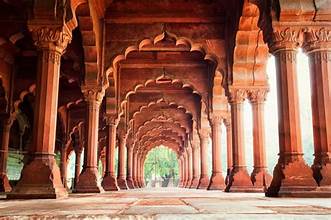World Heritage Day: India, a country rich in culture and heritage, boasts a plethora of UNESCO World Heritage Sites that are a testament to its rich history and architectural marvels. On World Heritage Day, celebrated on April 18th every year, it is imperative to reflect on the significance of these sites and their preservation for future generations.
Exploring India’s UNESCO World Heritage Sites
The Taj Mahal: A Symbol of Love and Architectural Brilliance
The Taj Mahal, located in Agra, Uttar Pradesh, is perhaps one of the most iconic symbols of India’s rich heritage. Built by the Mughal Emperor Shah Jahan in memory of his beloved wife Mumtaz Mahal, this magnificent marble structure is celebrated for its unparalleled beauty and architectural brilliance. Visitors from across the globe flock to witness the mesmerizing beauty of the Taj Mahal, making it one of the most visited tourist destinations in India.
- History and Significance of the Taj Mahal
- Architectural Marvels of the Taj Mahal
The Red Fort: A Testament to Mughal Grandeur
Another UNESCO World Heritage Site in India is the Red Fort, located in the heart of Delhi. Built by Emperor Shah Jahan in the 17th century, the Red Fort served as the main residence of the Mughal emperors for nearly 200 years. Its imposing red sandstone walls and intricate architectural details are a testament to the grandeur of the Mughal era. Today, the Red Fort stands as a symbol of India’s rich cultural heritage and is a popular tourist attraction, drawing visitors with its impressive architecture and historical significance.
- History and Architecture of the Red Fort
- Cultural Significance of the Red Fort
The Qutub Minar: An Icon of Delhi’s Heritage
The Qutub Minar, located in Delhi, is another UNESCO World Heritage Site that showcases India’s architectural prowess. Built in the 12th century by Qutb-ud-din Aibak, the founder of the Delhi Sultanate, the Qutub Minar is the tallest brick minaret in the world. Its intricate carvings and towering height make it a marvel of medieval architecture. Visitors can climb to the top of the minaret to enjoy panoramic views of Delhi’s skyline, making it a must-visit destination for history enthusiasts and architecture lovers alike.
- History and Construction of the Qutub Minar
- Architectural Features of the Qutub Minar
Preserving India’s Cultural Legacy
While India’s UNESCO World Heritage Sites are a source of pride and admiration, they also require diligent efforts for their preservation and conservation. Rampant urbanization, pollution, and neglect pose significant threats to these sites, endangering their integrity and historical significance. It is imperative for government bodies, conservationists, and the public to come together to ensure the safeguarding of these invaluable treasures for future generations to cherish and admire.




